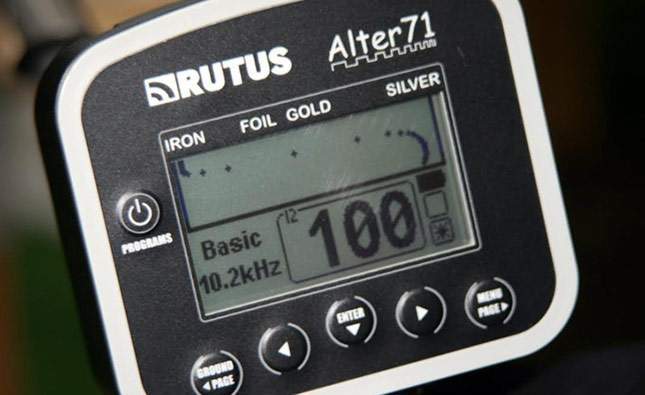
A quick visual comparison of Tarsacci MDT 800 and Rutus Alter 71 in heavy clay soil.

A quick visual comparison of Tarsacci MDT 800 and Rutus Alter 71 in heavy clay soil.
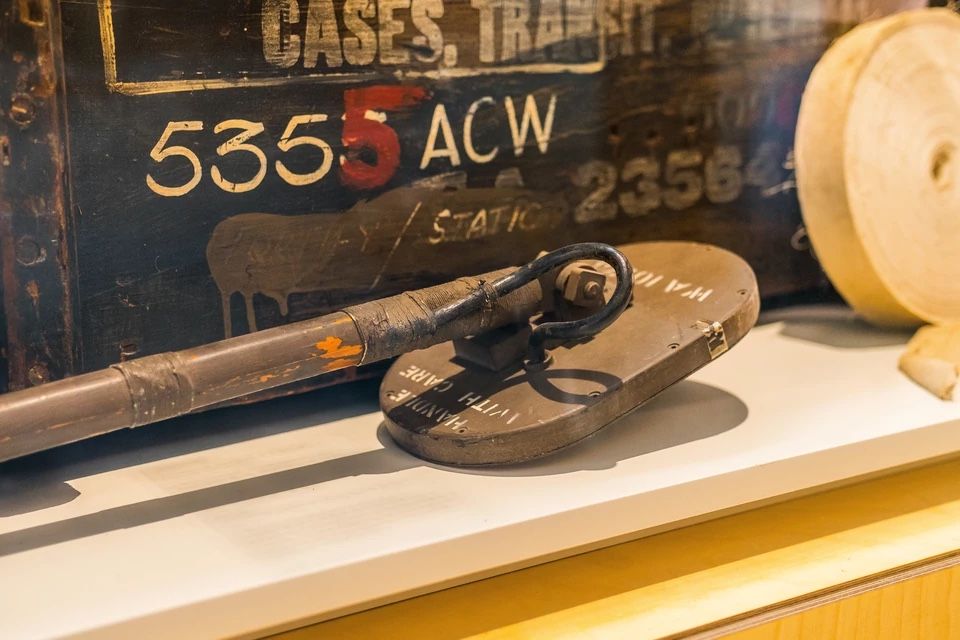

The hand-held mine detector – because that’s what we’re talking about – was invented by Józef Kosacki in 1941. The prototype was built in just three months, and then quickly went into serial production to “significantly contribute to the Allies winning World War II”.
Even King George VI sent a congratulatory letter to Kosacki in recognition of his merits, and yet few people know about the Polish inventor today. Just like the circumstances of the creation of the prototype.
And it all started with a tragedy. On June 1, 1941, a team of several people from the then-famous 10th Armored Cavalry Brigade was sent to comb the Scottish beach near Arbroath. A routine patrol hit the coast, which, however, had been mined before the British – for fear of German landings. But no one knew about the mines. None of the Polish soldiers returned from the mission, which shocked both British and Polish commanders. One of them was Lieutenant Józef Kosacki, who quickly decided to return to the idea he had been working on in pre-war Poland.
The starting point for Kosacki was the discovery that telegraph amplifiers react with hum to the presence of metal. That is why he used this phenomenon by constructing a mine detector – he worked on the prototype for only three months, using the phenomenon of the electromagnetic field.
What did his detector look like?
“It was light, weighed about 14 kg, and at the same time relatively simple, possible to be carried and used by one soldier” – remind Teresa Kowalik and Przemysław Słowiński in the book “Royal gift. What Poland and Poles gave to the world”. It consisted of a wooden satchel with an acoustic frequency oscillator, an amplifier, and power batteries – put on the back. And also from a bamboo stick with coils and a variometer (it’s nothing more than an inductance changer). Small, uncomplicated, and handy (“earlier devices were not suitable for use on the battlefield. They could help engineering services clearing a battlefield, but not soldiers breaking through a minefield”). And most importantly: very effective.
A handful of 1p coins were scattered on the beach. The task was to find them all. The competition, which was announced by the British Ministry just a few days after the tragic events near Arbroath, had 7 applicants. The winner turned out to be Kosacki – his detector tracked all the coins. Very quickly, thus outclassing the competition.
The device received the official name “Mine Detector, Polish Type No. 1” and quickly went into serial production. Then it entered the equipment of the British army, and over time it was used by other allied armies. The detector was used for the first time in the Second Battle of El Alamein in 1942, where it significantly contributed to the Allied victory.
“In the following years, improved and modified, the mine detector found its way to battlefields around the world. Simple, yet effective, it turned out to be extremely long-lived equipment – it was used until the 1990s, of course in a modified version. The number of people saved by it can be estimated in thousands.” That is why today Kosacki is most often referred to as “the man who contributed to winning World War II”. Or shorter: “Pole who stopped death”.
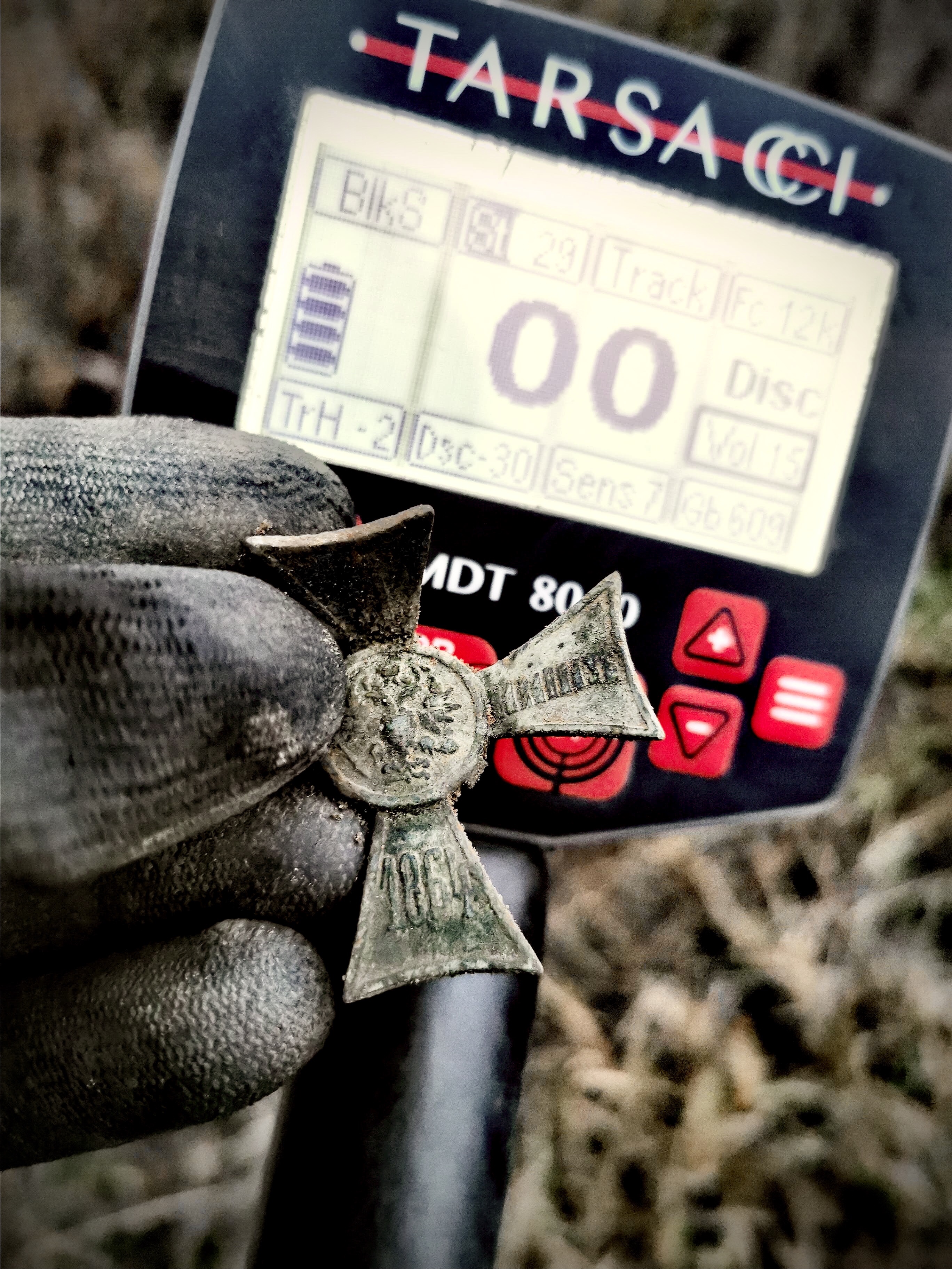

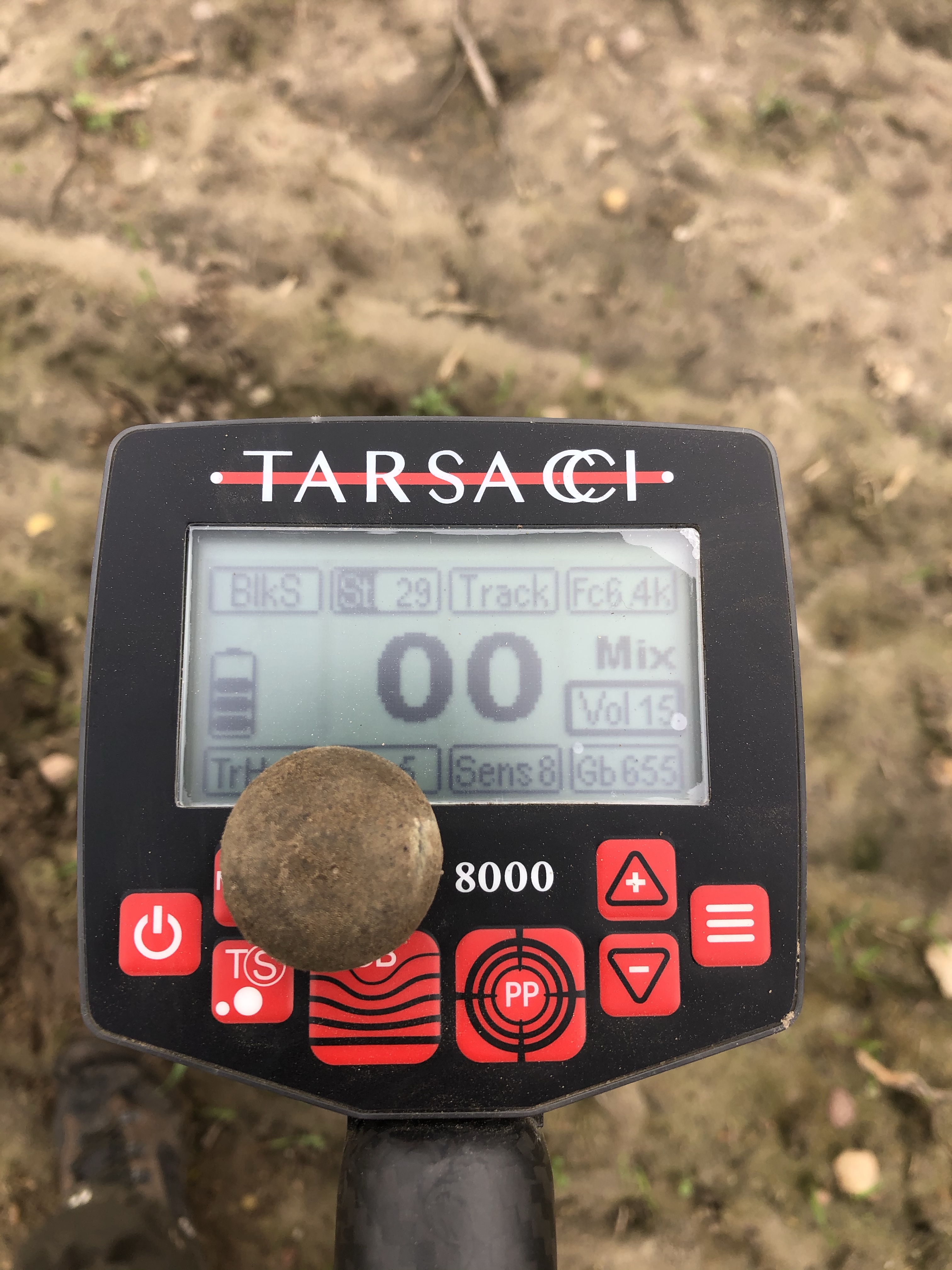
Another few interesting finds from a passing spot with Tarsacci MDT 8000.






Searching for coins, souvenirs and various types of treasures hidden underground is an activity that has many enthusiasts. Every person who wants to start their adventure with treasure hunting should equip themselves with a decent metal detector. What model will be ideal for beginners? We have some tips. We encourage you to read!
Which detector to choose for the beginning?
The choice of metal detectors is very large. There are devices with the logo of many manufacturers, with different parameters and in a wide price range. What issues should you pay attention to when looking for the perfect first detector? We have some tips!
What is our goal?
Question number one is about our goals, which is what we will be looking for. Depending on your preferences, we can focus on searching for coins, military items made of steel, jewelry, items made of non-ferrous metals, and many other valuables. If we want to focus on specific items or do not intend to waste time digging up worthless garbage, a device with a discrimination function will be an excellent choice. And matched to the artifacts we are looking for – objects.
Where will we look for valuables?
Another important issue is the areas of our search. Let’s analyze whether we want to focus on forests, meadows, beaches, and other places of this type, or whether we plan to walk with our device through a river, and ponds, and wander in the waters of seas and lakes.
Metal detector – price
Of course, the purchase of a detector is a cost and often it is not small money. It is good to determine at the outset how much we want and can pay for the device. However, it should be remembered that devices from the lowest shelf, for about PLN 150-200, may not work well and disappoint us or even discourage us from the hobby. The optimal solution for beginners is to buy a mid-range device for about PLN 1000-2500.
Metal detector – working time
The longer the expeditions, the more capacity the device should have. Keep in mind, however, that the weight of the device increases with the capacity of the battery. For beginners, heavy models may not be a very comfortable solution.
Metal detector – technology
For beginners, detectors that are easy to use and have basic functions will work best. Professional equipment is worth buying when you gain experience.
Detectors for beginners – a few suggestions
Thinking about all beginners who are looking for their first detector, we have prepared a few suggestions:
It is a lightweight, intuitive to use, and at the same time effective detector that will certainly appeal to everyone starting their adventure with treasure hunting. The device is small, handy and equipped with a separation function. Achievements can pleasantly surprise. It’s a real class by itself.
SIMPLEX+ is an affordable, lightweight and intuitive metal detector. The device is equipped with a simple, single menu, an automatic ground balance function and a discrimination function. This detector will work both on land and in water (waterproof up to 3 meters). Compact when folded, the manufacturer offers a free software update.
Another noteworthy proposition for both beginners and experienced users is the Vista X detector. The greatest advantages of the mentioned device are above-average performance, ease of use and double separation. Affordable and convenient to use.
Nokta Macro Mini and Midi HOARD
The first waterproof detector for children. Two MINI versions from 4 to 8 years old and MIDI from 8 to 12 years old. Having fun together and learning about history. There’s nothing better!
Advanced and institutional detector
Nokta Macro INVENIO PRO
The world’s first detector based on artificial intelligence. The device recognizes shapes, type of object, gives dimensions and depth. The perfect tool for archaeological research. Simple intuitive interface in Polish.
Summary
The great search for treasures hidden in the earth is a fascinating activity that enjoys a growing number of enthusiasts. How to choose your first detector? First of all, it should be intuitive to use, quite light and adapted to the area in which we will conduct the search. If you have problems with the choice, it is worth relying on the help of specialists.
We invite you to use our online chat on the website and email: sklep@omnitron.pl
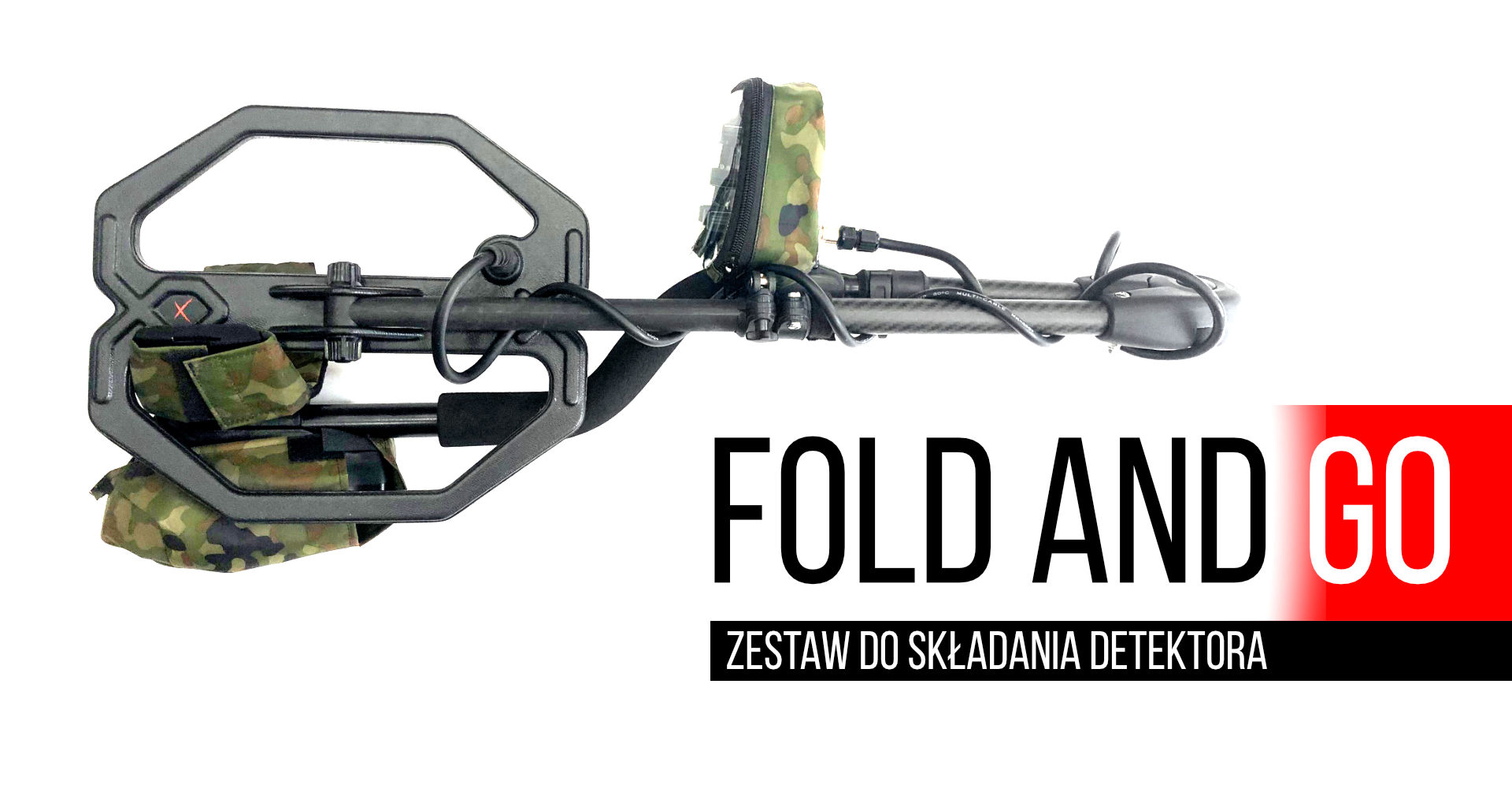
Even the most expensive models of detectors have a problem with their dimensions. Fold and GO is a solution for all those who need compact sizes. Do you need to take your equipment in a backpack, fit it in a small trunk or pack it in hand luggage? Thanks to our solution, it is finally possible. Please click photo below:

XP DEUS II vs Minelab Manticore who will win this duel? It depends … it depends on what we expect from both detectors because both are really good.
DEUS II is the king of ergonomics when it comes to the lack of cables, weight – 960 grams, and compactness, and there has been no competition in this category for years. What else? The audio was created by a real musician. Also undefeated for years, although Minelab created more pleasant tones and less tiring, also worse describing the subject. What is the difference? On nuances and additional sounds and their change and their modulation and volume. A piece of aluminum in the form of a can sounds differently than a coin, even if it is similar in its conductivity. It’s a lot. After a while, we know what is what. That’s what it’s supposed to be about. Disadvantage? In the long run, such audio can cause fatigue, especially in areas littered or full of iron. This is a minor difference, but for an experienced user, it is crucial.
Do we know anything more? Yes. Thomas Dankowski from the USA is a well-known American device tester before releasing them to the market. Over 40 years of experience is indisputable and his contribution to the development of many well-known devices is crucial. He has been testing Minelab Manticore for over a year and on the Dankowski forum (link: https://www.dankowskidetectors.com/discussions/index.php) he shared his observations with us, comparing it to devices such as XP DEUS II and Tarsacci MDT 8000 which also tested.
The Minelab Manticore was tested on the coast and on the beach, the inland tests simply did not take place and according to Thomas, the new Minelab is a slightly worse separating detector than the XP DEUSA II. Calabash Digger drew similar conclusions in his tests, which can be seen on his YouTube channel.
One important observation has been mentioned, the Manticore will be slightly deeper and it’s a matter of an inch or so (2-3 cm). This means performance at the level of the Tarsacci MDT 8000, which is a PI/VLF hybrid device and this means that such equipment is always deeper.
The 2D visualization of the Minelab detector in a clear field allows you to analyze the target, something more than the well-known XY plot from DEUSA XP. Unfortunately, with a large amount of iron, it does not work so perfectly and can lead to disappointment. As we know, everything requires learning.
The thing to check is the color spoof issue with heavy condensation of rusty items, but that takes time and fieldwork. It should be remembered that new software updates can change a lot for both manufacturers.
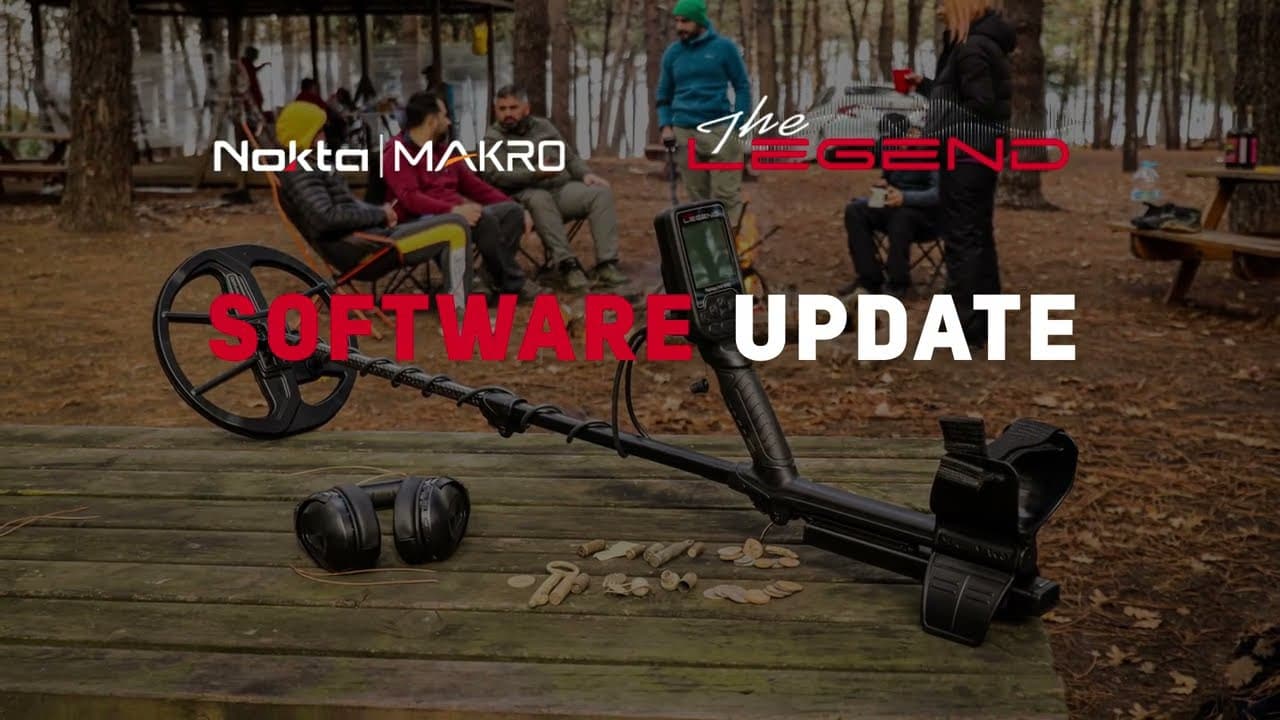
Updates Made:
1. M3 multi frequency in PARK mode has been updated to prevent coins from being masked by aluminum foil.
2. Bottle Cap Rejection setting has been added.
When the device is in multi frequency, select the Recovery Speed setting and press the pinpoint button. When you navigate with the right and left buttons, you will see the letters “bC” appear on the right side of the screen. You can adjust the bC value between 1-8 using the + and – buttons. When the bC is 0, it means that it is off.
3. Ground Suppressor setting has been added.
It is used to eliminate false ground signals in tough terrains. To access the setting, select the Recovery Speed setting and press the pinpoint button. When you navigate with the right and left buttons, you will see the letters “GS” appear on the right side of the screen. You can adjust the GS value between 1-8 using the + and – buttons. When the GS is 0, it means that it is off. It is recommended that you leave this setting at off position unless needed.
4. The audio emitted as the Tone Break points are changed while in 60-Tone, has been modified with increased bass.
5. Audio Gain setting has been activated in the Gold Field Mode.
6. Warning tones have been added to the buttons.
The buttons will now emit a warning tone in the following cases:
a) To indicate the minimum and maximum levels of settings.
b) When an inactive setting in a specific mode trying to be activated.
7. The brightness of the Backlight Level 1 has been reduced.
8. Bluetooth Chip Version will now be displayed.
When the Bluetooth headphones are paired with the device and the Bluetooth setting is selected, press and hold the Discrimination button. The Bluetooth chip version will be displayed in the clock section. When the button is released, the clock will be displayed again.
9. While in Automatic Ground Balance, the auto backlight will now be lit until the ground balancing is completed.
10. The loudness of the Volume Level 1 has been reduced in PARK, FIELD and BEACH modes.
11. A new level 9 has been added to the Iron Filter (IF) setting.
There has been no change to the levels 1-8. Level 9 will become handy when trying to discriminate some unwanted mid-conductors such as shotgun cartridges as iron.
12. General improvements have been implemented.
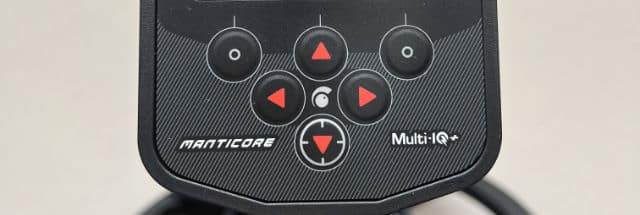
The new beast Minelab Manticore detector and my first impressions. The price knocks you off your feet, but let’s leave it for now and start with the ML 105 wireless headphones. The build quality itself is top shelf. It can be discussed whether such closed and thickly upholstered headphones are a good choice. It’s a matter of taste and season.
Everything is complemented by a spiral cable with jack plugs for connecting headphones via a waterproof connector in the panel. Different sound quality and a nice option. Although I would not enter the water with such a set … it will fall and there is no topic.
The armrest is another example of how you can approach it in a practical way. Adjustment with a simple latch instead of a problematic screw. Way to go.
The soft design of the plastics and the strap with the logo complete the whole. It convinces me, all beautifully set on a carbon fiber seatpost with quick-release locks. In the back part, a plug for rinsing the whole after wading in sandy water. Plus.
The handle with a rubberized grip and a good angle, as well as the undercut for the index finger for weight transfer are another plus.
The panel looks sensational and here the performance of the detector is also not surprising. Buttons, display all in place and finished with the highest quality materials.
The panel looks sensational and here the performance of the detector is also not surprising. Buttons, display all in place and finished with the highest quality mater
The whole is well-balanced and compact, you can’t ask for more. No more flooding electronics like in the old Equinox model and no more breaking probe ears. Now the mount has been moved to the lower element of the frame and even if it breaks, it is not the cost of the entire probe. The 11-inch probe has additional reinforcements and does not stand out from the whole.
